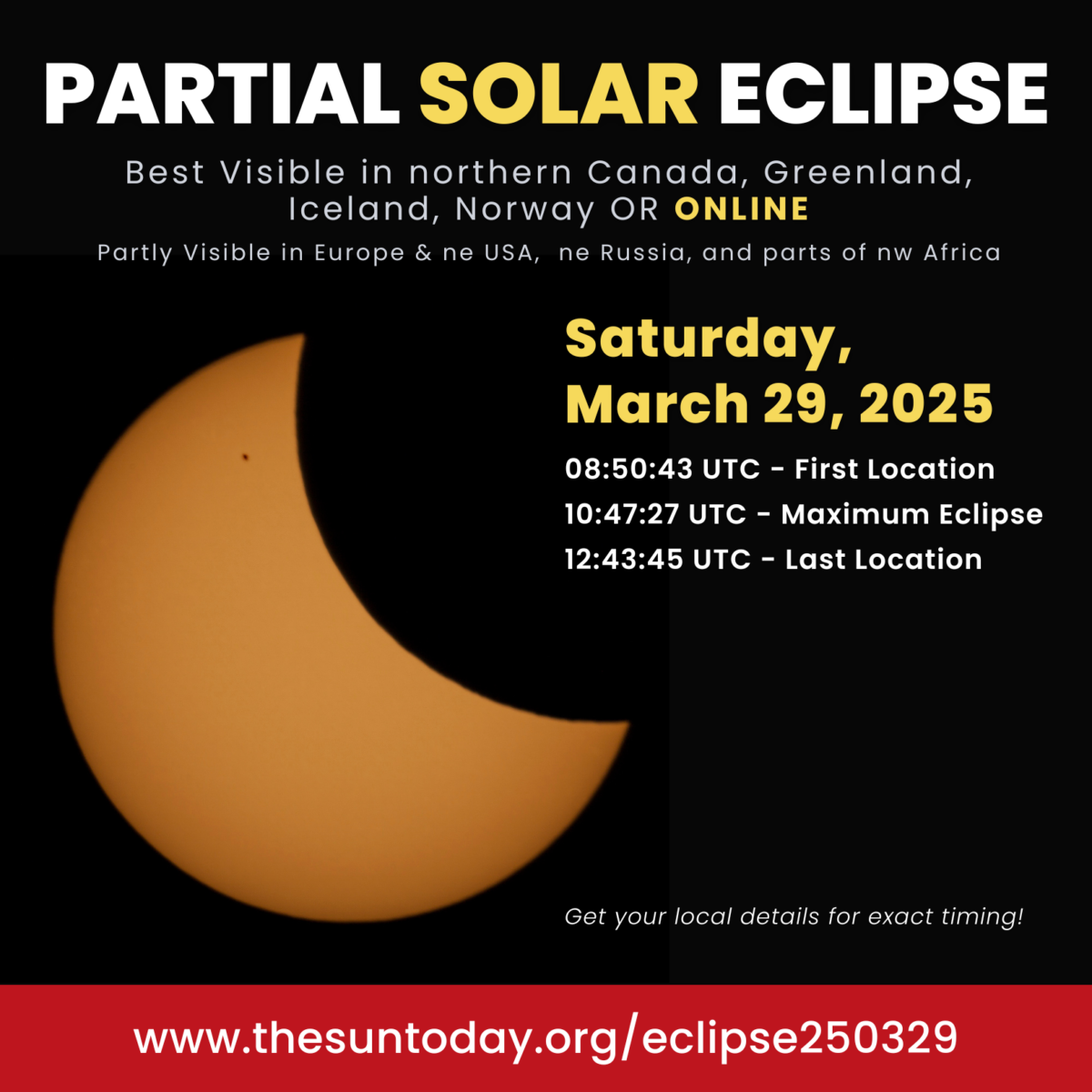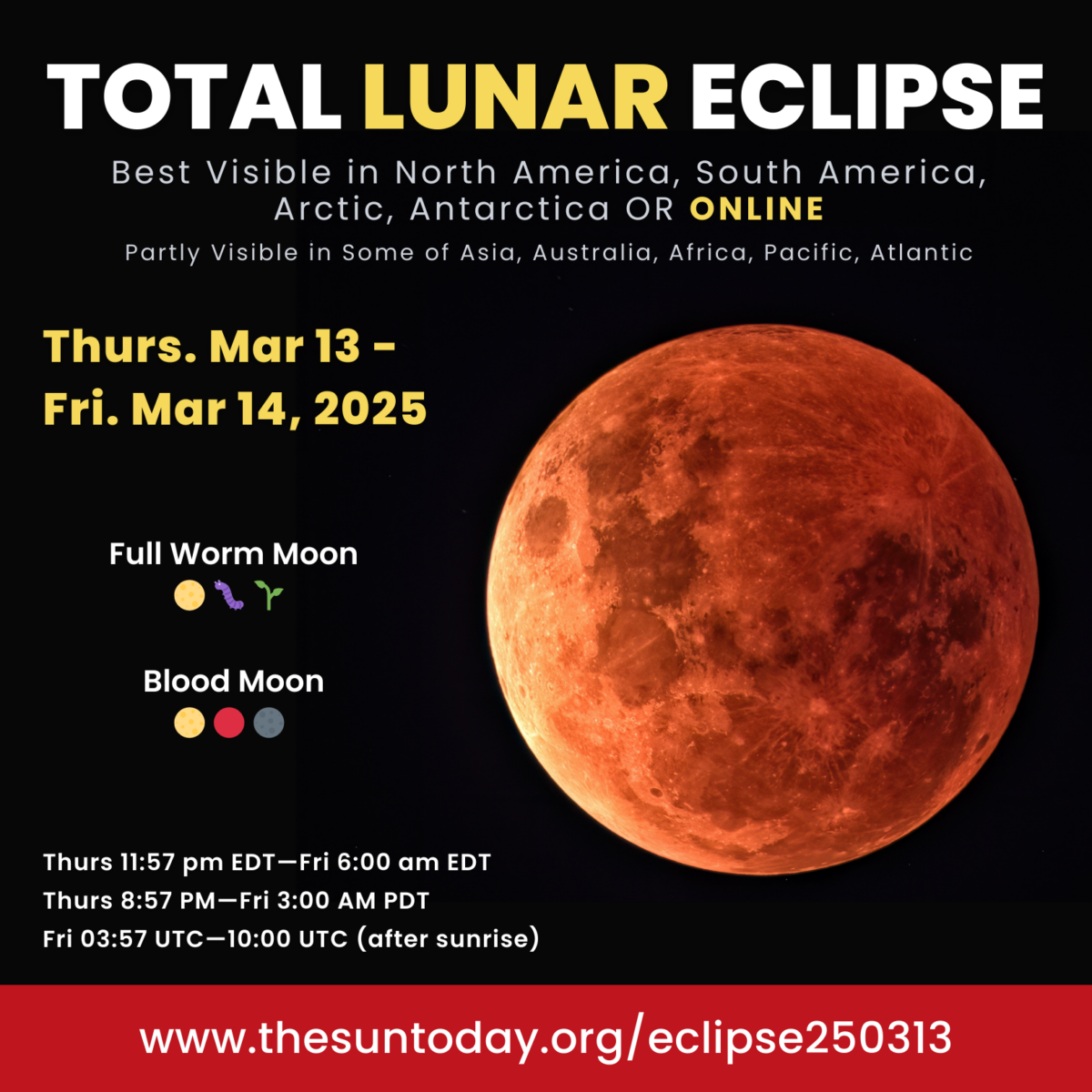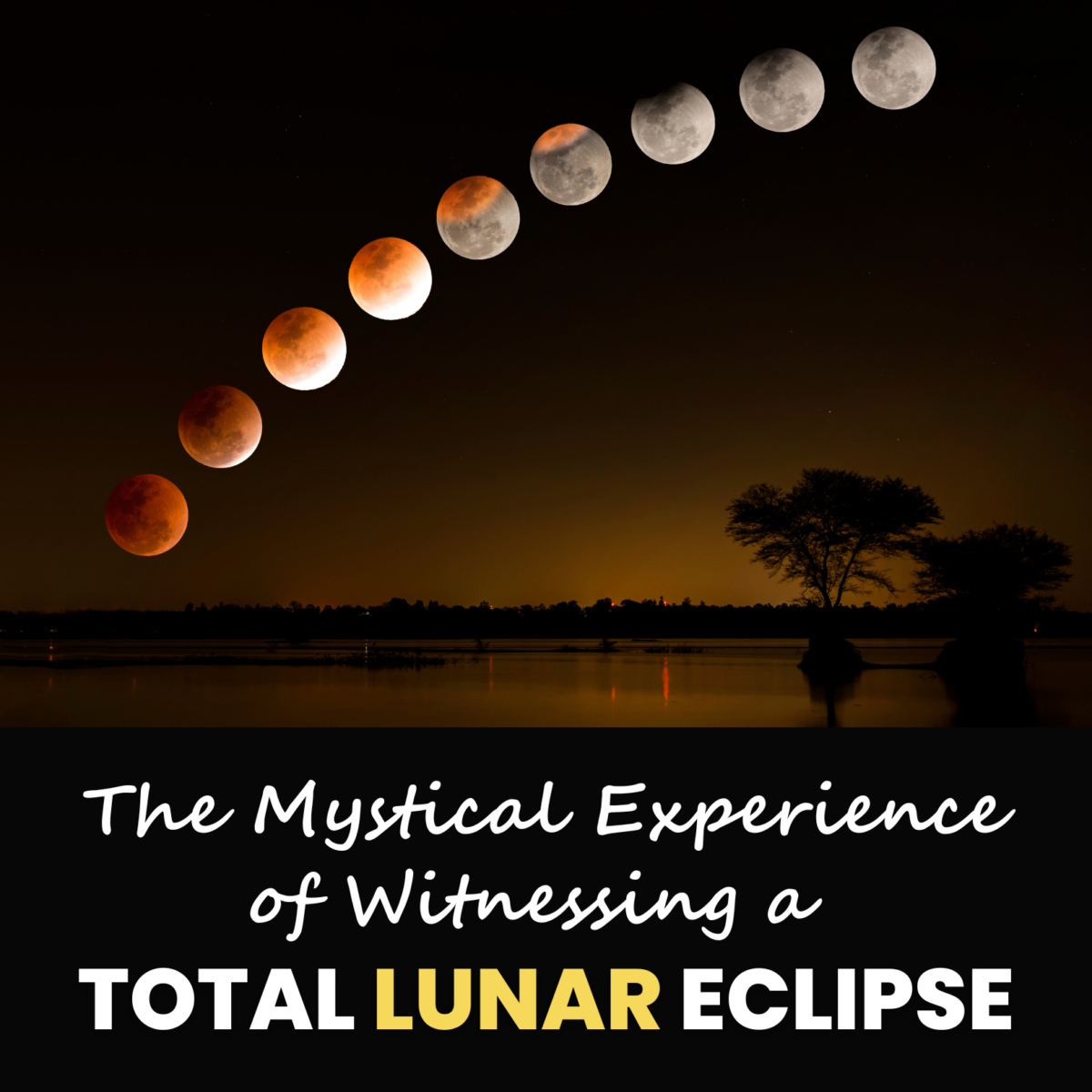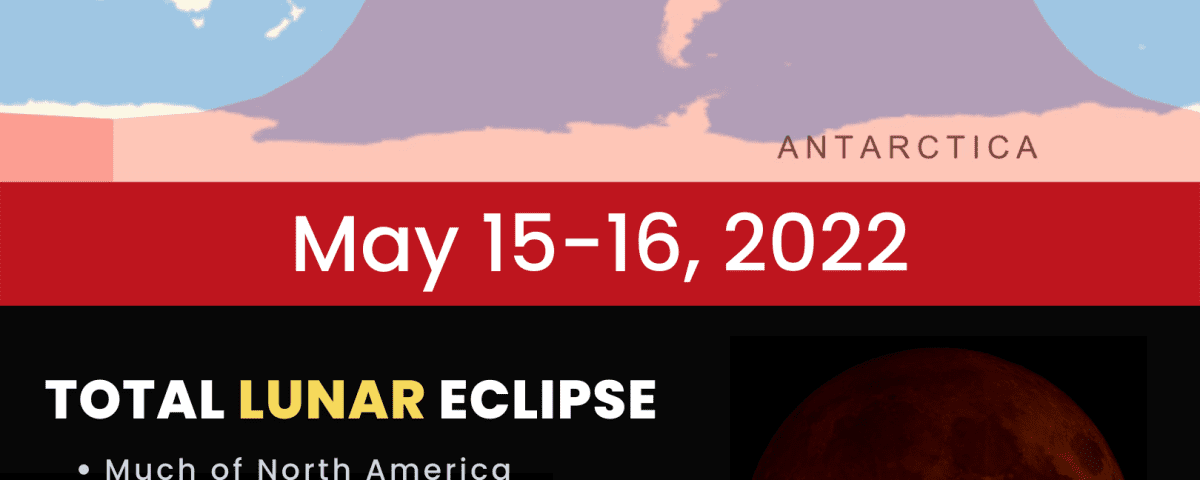
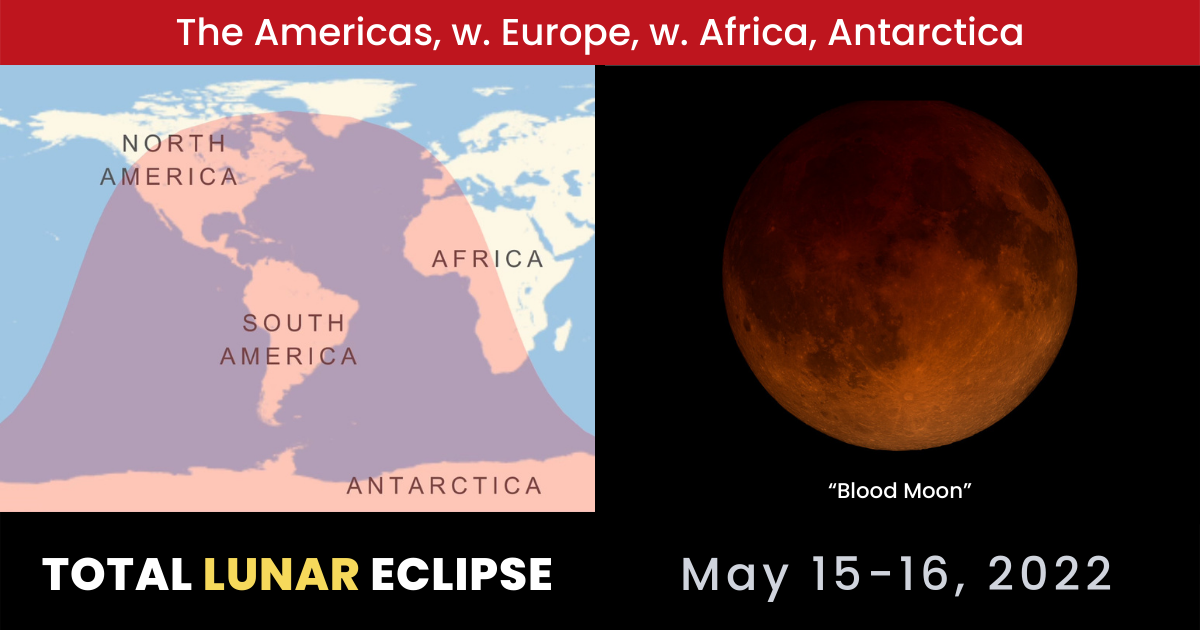
This eclipse is a long one, with totality lasting 84.9 minutes, almost an hour and a half!
The “Blood Moon” is back! The Moon may appear red because Earth’s atmosphere absorbs the other colors while it bends some sunlight toward the moon.
During a lunar eclipse, Earth gets in the way of the sun’s light hitting the moon. That means that during the night, a full moon fades away as Earth’s shadow covers it up.
The entire eclipse will be visible for most of North America, Central America, and South America. Western Europe, western Africa, and Antarctica will see at least some of the eclipse. This is the second eclipse of the first season of 2022. There was a partial solar eclipse on April 30, 2022.
No special glasses are needed for a lunar eclipse!! Unlike the Corey Hart song, you don’t need to wear your sunglasses* at night! 😎
Where can you see it?
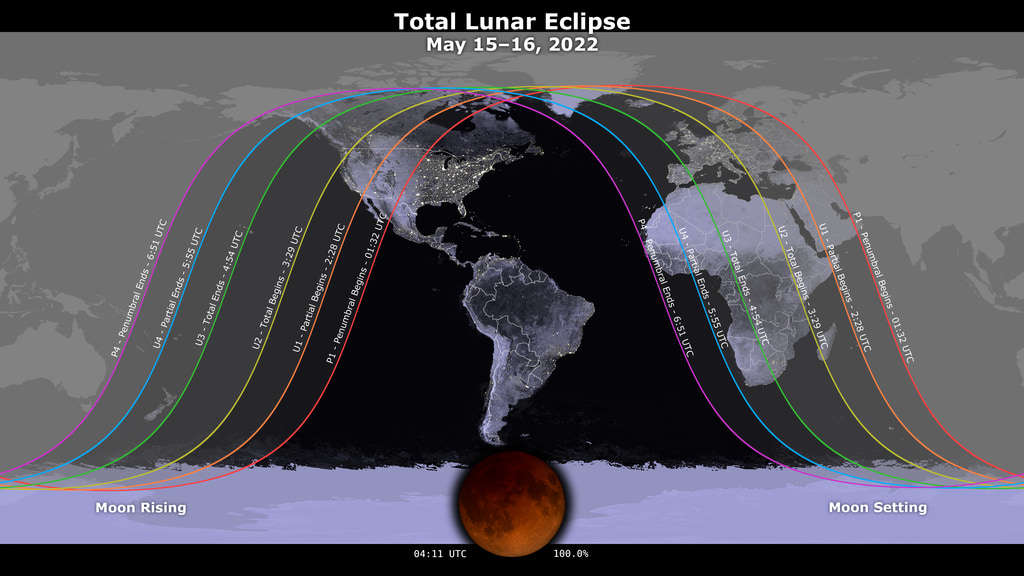
A map showing where the May 15-16, 2022 lunar eclipse is visible. Contours mark the edge of the visibility region at eclipse contact times. The map is centered on 63°52’W, the sublunar longitude at mid-eclipse. credit: NASA SVS
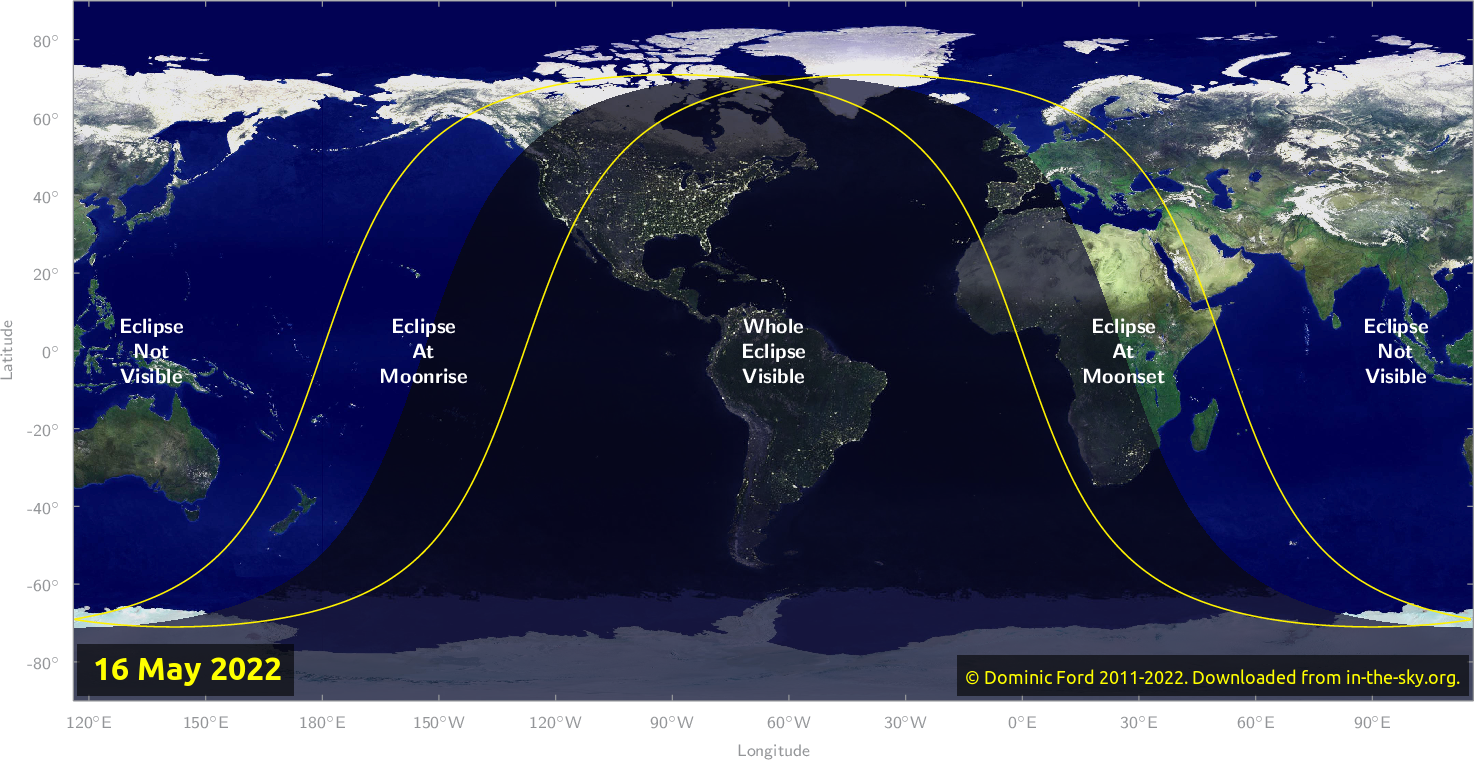
Why is the moon red?
The moon is red during a total lunar eclipse because of the same effect that creates sunrises and sunsets.
Colors of shorter wavelengths like blue are scattered more by Earth’s atmosphere than the longer wavelengths like red. When the sun is low in the sky during sunrise and sunset the light travels through more atmosphere so more of the blue light is scattered leaving more red light. When Earth blocks the light from the sun during a lunar eclipse the edge of Earth has a glow like a sunrise or a sunset from the scattered light in the atmosphere. This is what gives the shadow on the moon during the total eclipse its reddish tint.
Top Tips for Viewing
- Don’t just go out once to look. Watch as much of the event from start to finish to see how the moon changes.
- Look at the video showing the phases so you will know what to expect.
- You don’t need any special glasses or protection. It is like looking at a regular full moon.
- You can use binoculars or a telescope to see more details but your eyes are all you need.
* Always wear proper eye protection when viewing a solar eclipse. View details »
Watch the Event Replays – Telescope Views & Commentary
What will you see? What time?
Unlike a solar eclipse, the timing of the lunar eclipse is the same for everyone in the viewing area, just adjusted to your time zone.
| Phase | EDT May 15-16 |
PDT May 15 |
UTC May 16 |
| Penumbral Eclipse Begins Not much to see yet! The outer edge of the Earth’s shadow is called the penumbra. It is barely noticeable by the naked eye when the Moon passes through it. The light only dims by a couple of %. It’s not a particularly interesting part of a lunar eclipse. |
9:32 p.m. | 6:32 p.m. | 1:32 |
| Partial Eclipse Begins The real action begins when the bright full Moon begins to be covered by Earth’s darker shadow (umbra). The bright full Moon may appear white, but with a fuzzy shadow blocking part of it. |
10:27 p.m. | 7:27 p.m. | 2:27 |
| Total Eclipse Begins Start of the best part! An hour later, entirely within the umbra, the Moon is a ghostly reddish color. Totality lasts for an hour and a half before the Moon begins to emerge from the central shadow. |
11:29 p.m. | 8:29 p.m. | 3:29 |
| Maximum Eclipse The peak of the show! This is the peak of the event, at the halfway point. This is when the reddish color will be the deepest. If you only have time to look at one part, this is what to aim for. |
12:11 a.m. | 9:11 p.m. | 4:11 |
| Total Eclipse Ends Start watching the transition back to a white Moon! The total eclipse ends when the edge of the Moon starts to emerge out of the full shadow (umbra) and into the lighter shadow (penumbra). The reddish color begins to disappear. The bright full Moon may appear white, but with a fuzzy shadow blocking part of it. Now the partial eclipse phase begins again. |
12:54 a.m. | 9:54 p.m. | 4:54 |
| Partial Eclipse Ends The show is over for most sky watchers! The Moon has moved completely out of the Umbra. If viewing with your naked eye, this is a good place to stop watching. The Moon will be moving through the penumbra, but it is difficult to see this, as the light change is only a few %. |
1:55 a.m. | 10:55 p.m. | 5:55 |
| Penumbral Eclipse Ends Not much to see here! The official eclipse is over when the Moon completely leaves the outer edge of the Earth’s shadow. |
2:51 a.m. | 11:51 p.m. | 6:51 |
To find out the eclipses times for your local check out timeanddate.com.
On May 16, 2022 (the night of May 15 in the Western Hemisphere), the Moon enters the Earth’s shadow, creating a total lunar eclipse, the first since May 2021. These animations shows the changing appearance of the Moon as it travels into and out of the Earth’s shadow, along with times at various stages. The penumbra is the part of the Earth’s shadow where the Sun is only partially covered by the Earth. The umbra is where the Sun is completely hidden. The Moon’s appearance isn’t affected much by the penumbra.
Depending on your location on Earth, the direction of the shadow’s movement is different. Use a tool like timeanddate.com to see what you will see at your location.
Throughout the eclipse, the Moon is moving through the constellation Libra.
(VIDEO & MOON IMAGE CREDIT: NASA SVS)
What will the phases of the eclipse look like?
The orientation of the Earth’s shadow will look different, depending on your location. Here’s a simulation of what to expect.
Click to view images larger.
Eastern Daylight Time – Maximum Eclipse: 12:11 a.m. Monday
Central Daylight Time – Maximum Eclipse: 11:11 p.m. Sunday
Mountain Daylight Time – Maximum Eclipse: 10:11 p.m. Sunday
Pacific Daylight Time – Maximum Eclipse: 9:11 p.m. Sunday
Universal Time (UTC) – Maximum Eclipse: 5:55 Monday
What is a lunar eclipse?

Earth’s shadow can be divided into two distinctive parts: the umbra and penumbra.
Earth totally occludes direct solar radiation within the umbra, the central region of the shadow. However, since the Sun’s diameter appears about one-quarter of Earth’s in the lunar sky, the planet only partially blocks direct sunlight within the penumbra, the outer portion of the shadow.
Within the umbra, the central region, the planet totally shields direct sunlight. In contrast, within the penumbra, the outer portion, the sunlight is only partially blocked.
In the diagram, the Sun, Moon, and Earth sizes nor the distances between the bodies are to scale.
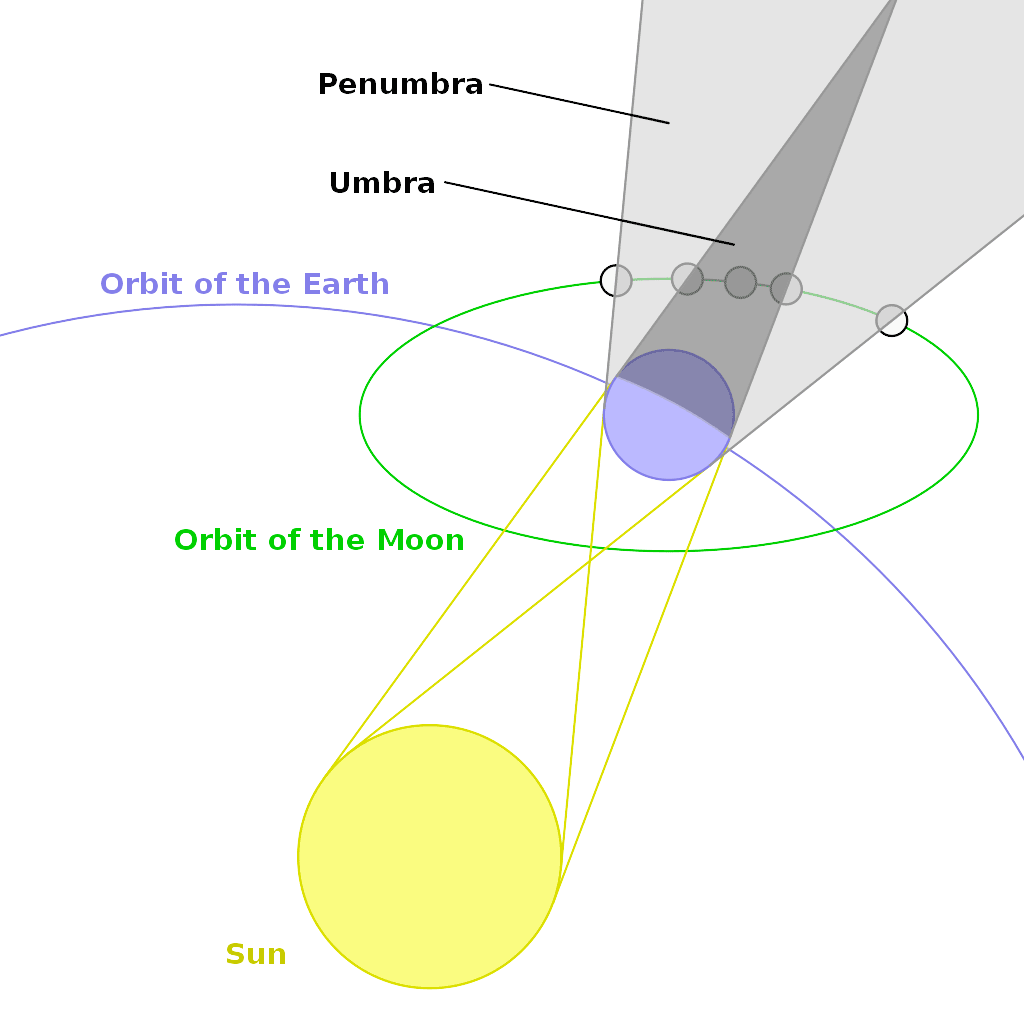

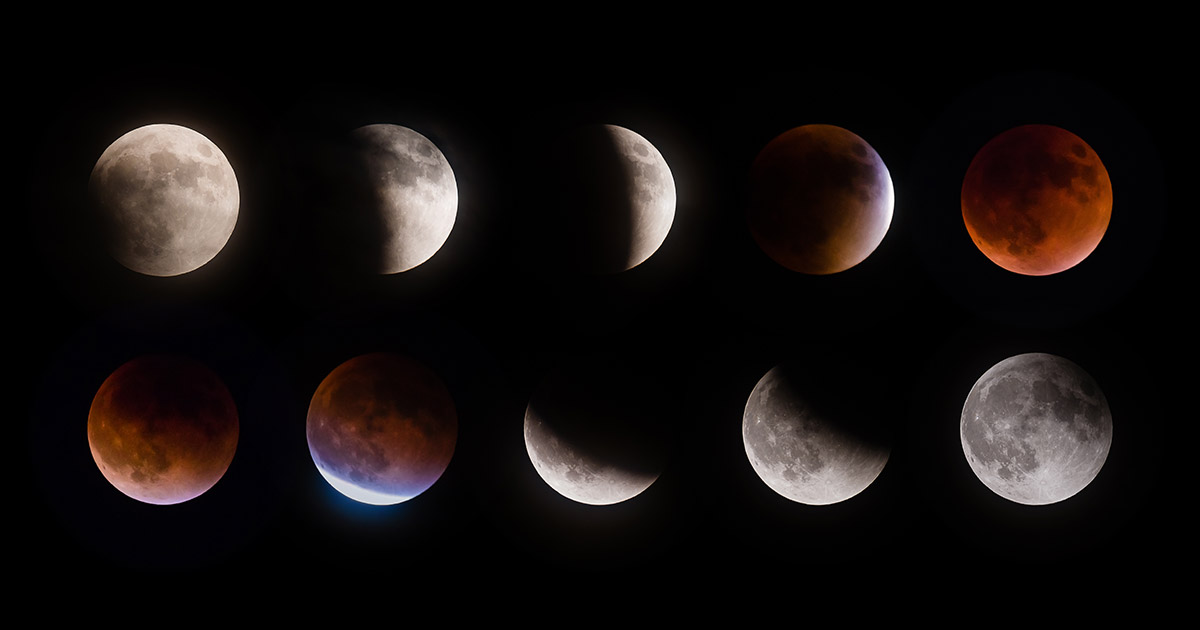

CREDITS: NASA, eclipsewise.com, earthsky.org, timeanddate.com, and greatamericaneclipse.com, Ficazo, Eledraws (Eleonore Bem), In the Sky.


